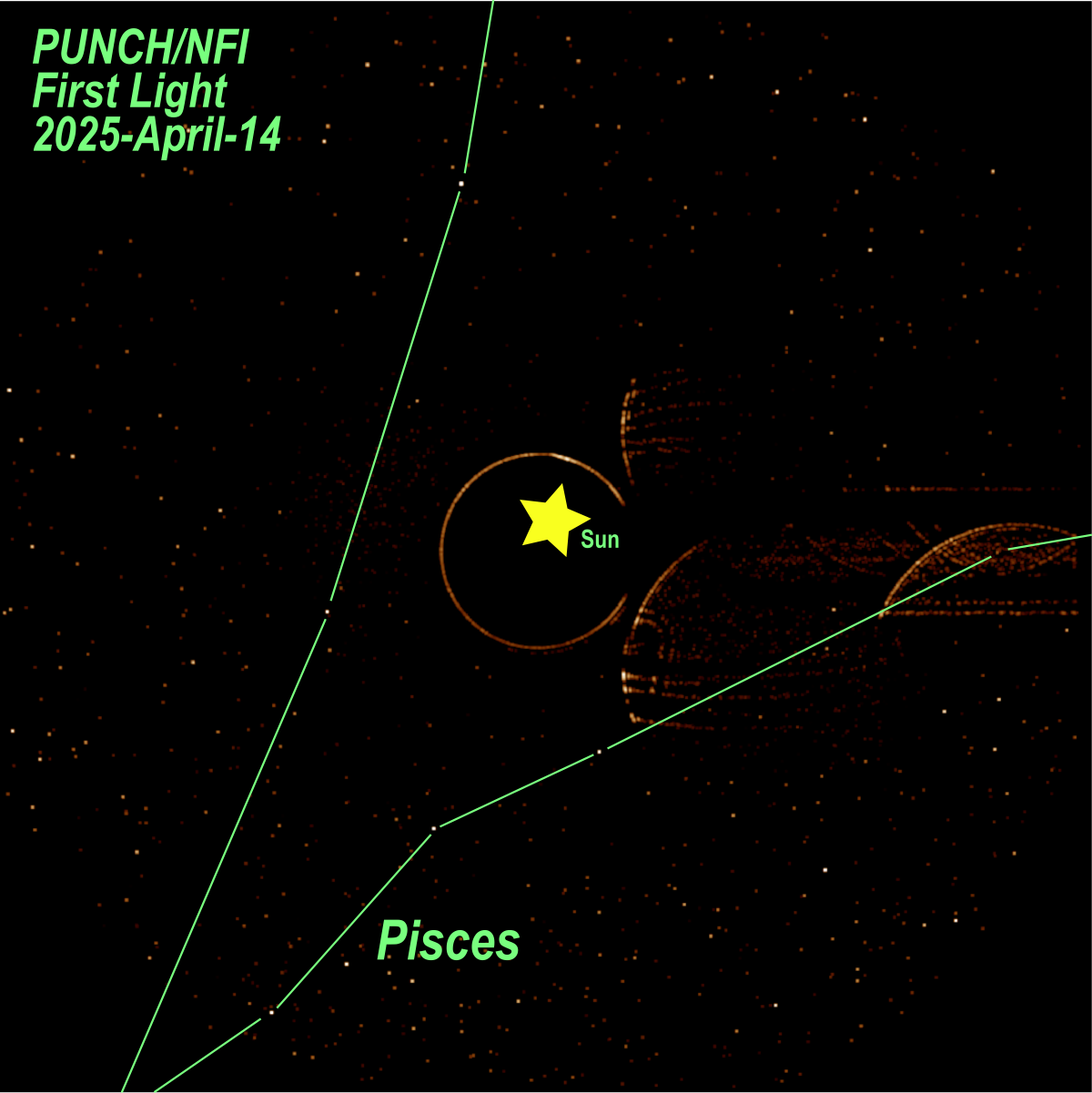Studying the Sun is becoming increasingly important as more and more of our infrastructure moves off the surface and into the realm where coronal mass ejections and the solar wind can begin to affect them. Scientists recognize this problem and have started devoting more and more resources to studying the Sun, specifically the "space weather" that might affect us. Recently, one of the newest members of the group of satellites focused on studying the Sun hit a milestone when the Polarimeter to Unify the Corona and Heliosphere (PUNCH) mission took on its first light.
PUNCH consists of four "microsatellites," each weighing 40 kg, each carrying a sensor meant to capture images of the Sun's corona—the outer part that creates much of the space weather that permeates our solar system. Their primary mission is to study how structures in the corona become the solar wind, as that can cause havoc with equipment and even the health of astronauts.
To track these dynamic structures, PUNCH has two different types of sensors - a near field imager (NFI) carried on one of the four satellites, and three wide field imagers (WFI) carried by the other three spacecraft. The NFI acts as a standard coronograph, taking images directly of the corona but utilizing an occulting disk to block some light. The WFIs are "heliospheric imagers" with a broader field of view, allowing them to capture more of the area between the Earth and the Sun. The spacecraft containing the NFI also carried a student experiment designed to do X-ray spectroscopy, called the Student Thermal Energetic Activity Monitor (STEAM). However, it failed integration testing when loaded onto the spacecraft and will remain powered off for the mission's duration.
Can the Sun release a killer flare is exactly one of the questions PUNCH is hoping to answer definitively. Fraser attempts to in this Q&A from several years ago.
That is not the fate of the NFIs and WFIs, though. On April 14th, two of the four spacecraft opened their doors for the first time, and first light fell on the NFI and one of the WFIs. That kicked off a commissioning phase, where the eventual goal is to remove about 99% of light from the corona itself. Theoretically, a much darker image would allow scientists to track the wispy structures of solar material as they are pushed throughout the rest of the solar system.
The satellites will need to coordinate to do that. The mission is being run by the Boulder office of the Southwest Research Institute (SwRI), which also operates missions like Lucy and New Horizons. The SwRI researchers based the control of the constellation of PUNCH satellites on the Cyclone Global Navigation Satellite System, a University of Michigan-led mission that coordinated eight microsatellites to observe hurricane season over the Atlantic.
As part of their commissioning process, the mission operators released several images of the sky behind the sun, highlighting interesting features like constellations and an asteroid (Iris). Since it's still very early in the commissioning process, there is still a pretty significant amount of light coming from the Sun that drowns out some of those features.
Heliophysics is affected by many variables, one of which is the temperature of the Sun, as Fraser discusses.
But that is precisely what the commissioning process is for. It is expected to take about 90 days from the mission's launch on March 11th to complete the commissioning process, putting the constellation into full operation sometime around June 9th. As its mission begins, scientists can expect plenty of data from the constellation of new Sun observers, and hopefully some great discoveries about how the solar corona works, hidden within.
Learn More:
NASA -NASA's PUNCH Mission Captures First Images of Sun, Space
UT -Groundbreaking New Maps of the Sun's Coronal Magnetic Fields
UT -Why is the Sun's Corona So Hot? One Hypothesis Down, Many to Go
UT -A Hole Opened Up in the Sun's Corona and Vented Helium-3
 Universe Today
Universe Today
